The Profit Magic of Stock Transaction Timing
$31.25
| Author(s) | |
|---|---|
| Product Type |
Ebook |
| Format |
|
| Skill Level |
Intermediate to Advanced |
| Pages |
216 |
| Publication Year |
1970 |
| Delivery |
Instant Download |
The Profit Magic of Stock Transaction Timing is the groundbreaking classic that introduced modern cyclical analysis to the trading world. Written by J.M. Hurst, an aerospace engineer turned market theorist, this book bridges the precision of science with the art of market speculation — unveiling how predictable cycles shape every movement in stocks, commodities, and indexes.
Hurst’s research, supported by extensive computer simulations in the 1960s and 70s, uncovered that market prices move in a structured, rhythmic manner governed by dominant time cycles and their harmonic interactions. This work laid the foundation for what became the Hurst Cyclic Theory, later inspiring generations of analysts and system developers.
Inside, readers are guided through the logic of price motion, wave structures, and composite cycles that repeat across all timeframes. Hurst demonstrates how to identify these cycles using empirical data and mathematical principles, then use them to anticipate turning points before they happen. His concepts of “Nominal Cycles,” “Harmonic Ratios,” “Future Line of Demarcation,” and “Valid Trend Lines” are as relevant today as ever.
Whether you are a discretionary trader or a quantitative analyst, The Profit Magic of Stock Transaction Timing provides a timeless framework for understanding how market prices flow through time. This is the book that redefined technical analysis and became the cornerstone of cyclical market forecasting.
✅ What You’ll Learn:
- How cyclical forces influence market price movements.
- Techniques to identify and analyze market cycles across multiple timeframes.
- Application of the Hurst Nominal Model and harmonic relationships between cycles.
- How to detect turning points and project probable highs and lows.
- Rules for drawing Valid Trend Lines (VTLs) and Future Lines of Demarcation (FLDs).
- The importance of synchronization, phasing, and amplitude in price prediction.
- Methods to combine cyclical and technical analysis into a cohesive trading system.
💡 Key Benefits:
- Gain scientific insight into the underlying mechanics of price movement.
- Learn how to forecast market turns using measurable cyclic patterns.
- Improve trade timing and confidence with objective, repeatable tools.
- Discover the origins of modern cycle analysis still used in advanced trading software.
- Develop a disciplined, analytical approach to trend forecasting and confirmation.
👤 Who This Book Is For:
This book is for traders, analysts, and system developers who seek a structured, mathematical understanding of markets. It’s ideal for technical analysts familiar with charting who wish to move beyond indicators into predictive modeling. Students of W.D. Gann, Elliott Wave, and quantitative trading will find it an essential companion for developing a cyclical trading edge.
📚 Table of Contents:
- MAXIMIZE YOUR PROFITS
- TIMING IS THE KEY
- VERIFY YOUR CHART PATTERNS
- TIMING YOUR BUYS WITH GRAPHICS
- YOU’VE MADE SOME MONEY – HOW TO KEEP IT
- COMPUTE YOUR WAY TO INCREASED PROFITS
- HOW TO SELECT AND TRACK TRADING ISSUES
- TRADING BY LOGIC INSTEAD OF BY GUESS
- WHY STOCK PRJCES CHANGE
- PITFALLS AND HOW TO A VOID THEM
- SPECTRAL ANALYSIS – HOW TO DO IT AND WHAT IT MEANS
The Profit Magic of Stock Transaction Timing By J. M. Hurst
23 reviews for The Profit Magic of Stock Transaction Timing
Clear filtersOnly logged in customers who have purchased this product may leave a review.

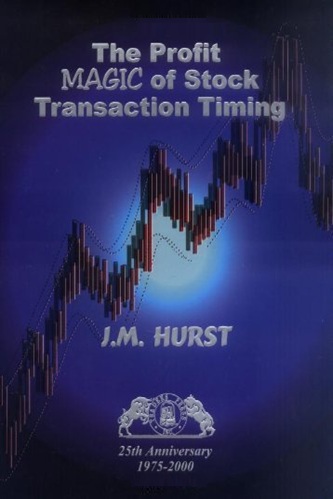

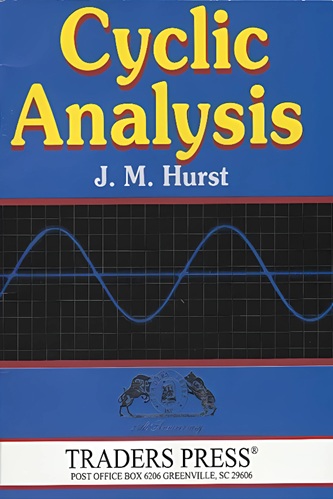
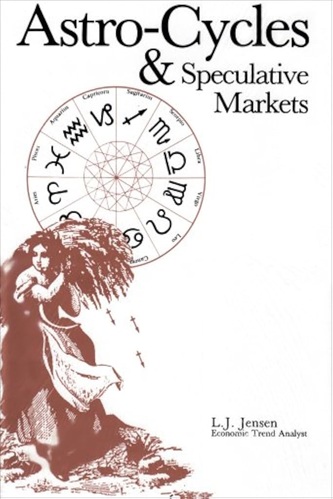
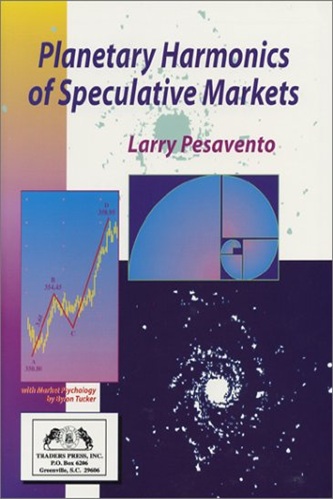
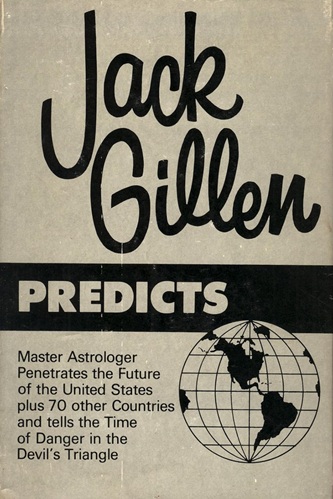
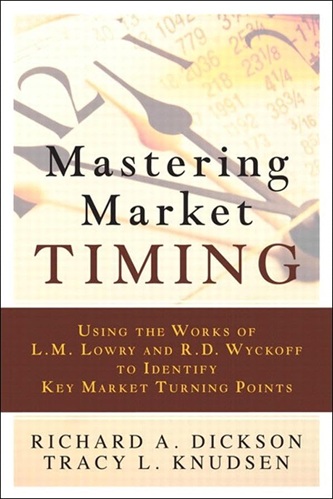
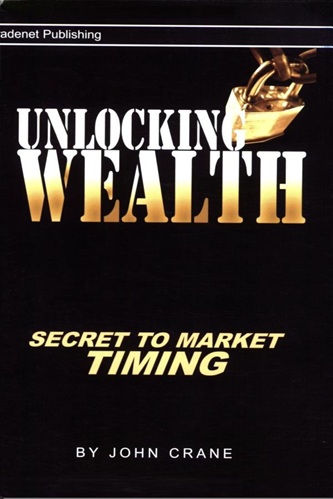

Amani Sawyer (verified owner) –
Amazing formulation on cyclical component of asset prices. Formulated as a “Phyisics” theory arrives at strong conclusion that help framework potential price range path. Above all, it is a different but complementary approach to other well establisged methods and as such help analyze charts from a different perspective. I am surprised that is not as known as other methodologies given how strong this formulation is. Finally, being an engineer myself I appreciate his writing, straight to the content and with no bla bla bla as most modern books.
Jefferson Leon (verified owner) –
J. M. HURST WAS A ELECTRICAL ENGINEER WHO DISCOVERED HOW THE STOCK MARKET OPERATES. HIS BOOK IS A COMPLETE MATHEMATICAL EXPLANATION OF HOW ALL STOCKS, COMMODITIES, ETC. CHANGE OVER TIME WITH THE POSSIBILITY OF PREDICITNG THE FUTURE IF YOU FULLY UNDERSTAND HIS THEORIES. HIS 1973 SEMINAR WORK BETTER EXPAINS HIS WORK.
Keilani Miranda (verified owner) –
THIS IS A HERETICAL BOOK THAT ARGUES THAT STOCK PRICES MOVE IN PARTIALLY PREDICTABLE WAYS, AND WAYS THAT ARE DIFFERENT FROM CONVENTIONAL THEORIES. HURST IS A SIGNALS EXPERT WHO DISENTANGLED WHAT IS GOING ON (WITHOUT NECESSARILY TRACING THE OBSERVED PATTERNS TO THEIR ROOTS). HIS BOOK IS A WONDERFUL BLEND OF PRACTICAL “HOW TO PREDICT” WITH A SECOND SECTION THAT GIVES A MORE COMPLEX MATHEMATICAL TREATMENT.
Khalil Terry (verified owner) –
When I first read this book, almost 8 years ago, I was overwhelmed. The amount of information was not only volumounous but meaty. Reading it made you feel like you were being let into some kind of secret that only the best trader’s understood. This book is a classic, but not for the fainthearted.
Also as with all books on swing trading and cycles as the market progresses the cycles change. I would love to see a complete revist of Hurst’s strategies for today’s market. I believe many of the skeptical would be pleasantly surprised.
Drew Allen (verified owner) –
i’m glad that most who reviewed it here got it! it is a little mathematically beefy. even if you can’t grasp the heavy math of the last chapters, the layman can benefit from the graphical buy/sell/hold signals and easy offset moving average methodology. while this book doesn’t provide the holy grail, it gives you “willie wonka’s golden ticket” into the wall street candy factory…
Maximo Foley (verified owner) –
Hurst’s premise is that stock prices are predictable because he found a line frequency spectrum in the data. This premise is completely false and cannot be proven mathematically. To be predictable there must be repeating components in the data. If you study prices long enough you can spot cycles that seem to repeat but after two or three appearances they change or disappear.
Hurst’s dominance principal is your first clue that his analysis is flawed. The so called cycles vary in dominance and come and go randomly. Certainly no predictive capability there.
Your probability of success with Hurst’s method: 50%. Same as a coin toss. Toss the coin and save the money you would spend on this book!
By the way, I have a Master of Science degree in mathematics and have spent years researching stock prices. My conclusion: trading the stock market is gambling; but the odds are better than Vegas. Keep it a hobby and don’t trade with any money you can’t afford to lose.
Jayson Benton (verified owner) –
I first bought this book when the original issue was published by Prentice Hall in the early 1980s. I’m glad to see it has stood the test of time and is still available. This book, among others, was influential on my thinking and research that led to a Ph.D. in economics. The book is highly technical and would be of most use to programmer-types. Even if you are not a programmer, it details concepts that have withstood up and down markets over many many years. Highly recommended.
Edison Barajas (verified owner) –
very informative and complete. Whilst most books talk about the trading method of the writer without giving any specific rules Hurst’s book seems to be concerned with ensuring the reader actually understands his methods in order to make a success in trading. It is recommended that each chapter be read more than once to fully understand the maths because it will be worth it. In my opinion this book is better than most books available on the Gann methodology.
Rory Anthony (verified owner) –
Many people still don’t understand what J.M. did. They compare it to already beaten channel analysis or Moving average analysis. It isn’t what Hurst used, it is how and why he used it is important. Hurst was the first to point the relation of proportionality of time/price swings with the periodicity of indicators as well as synchronicity of time cycles and he laid out mathematical foundation for computerized measurements. This requires some technical/programming skill and what’s more important good sense of proportion.
But even you are a good programmer, but without good sense of proportion you’ll go in circles and don’t get it (I met many rocket scientists like that). So first of all you should be good observer of life with some mathematical skill to fully comprehend what J.M. Hurst introduced. His statement of 90% success isn’t an exaggeration; it is rather conservative estimation assuming human error. His methods have potential to be 100%.
(And even you aren’t a programmer, but understand Hurst ideas, you can tweak existing charting package to do the job for you, that would take some time, but possible)
What he discovered in stock analysis is comparable to a perpetual motion in physics.
After completing his work J.M. mysteriously disappeared. No he isn’t dead, rather silenced. This book is already out of print and I wouldn’t be surprised if it disappears again. Remember Wall Street doesn’t want you to win; they reserve this right for themselves…
Wren Rasmussen (verified owner) –
This book is en lighting and is actual today as it ever was. It gives insight and explanation from a cycle analysis standpoint to classic chart formations. I do not find it a hard read, but you need to know how to learn. Clear up any word you do not understand in a good dictionary.
If you want to understand what are the essential component parts of any chart this is the book to use.
Rory Francis (verified owner) –
This book is OK. I have yet to read something derived from this that is OK. Thank you very much Mr. Hurst.
Zaylee Savage (verified owner) –
I bought my copy in 1972. A friend of mine recommended it. He started his financial adventure by using his Visa card to buy stocks while laid up in a hospital. He was a very successful investor. He and I had a technical background and were familiar with analysis of cyclical phenomena in electronics. Hurst applied the same techniques to finance. The stock market is much more complex than a radar, but still is dominated by cyclical factors. In 1972, computing a Fourier transform of market data involved lots of repetitive calculation. It was a real chore to collect data from a Standard and Poor booklet, arrange it, perform several calculations per point and assemble the results. I bought one of the first HP-35 calculators in August of 1972 for $395. It cut my work by a factor of 10. Now you can download data off the web into an Excel spreadsheet and do the process that took hours in seconds.
Hurst didn’t just depend on Fourier analysis. Explained smart use of limit orders, weighted averages, and other ways to maximize gains.
This book helped me to gain enough knowledge of stock market cycles to accumulate a respectable fortune.
It was much better than the advice of brokerage house “experts”.
It will not ensure you will gain on very trade, but will improve you overall success.
There are newer and better books out there. Hurst still has enough good ideas to make him recommended reading.
Thank you Mr. Hurst.
Nicole Collier (verified owner) –
The book has excellent ideas, so I would recommend it to any serious trader! It was written almost fifty years ago, however, before market screens on the computer were common.
Daniella Nolan (verified owner) –
This book is the guide to learning cycle analysis. The guides in this book can be applied in any charting package that allows time cycles.
Amora Sexton (verified owner) –
I can’t believe some of the negative reviews I have read here in general. Either the writers are total idiots or they’re trying to manipulate the system . Why else would someone write a bad review on a good book ? Surely they must know that it is impossible for ONE book to contain it all about the stock markets.If it did , it would be the dimensions of a 8 x 4 pool table and over twenty telephone books thick !
Will Woodward (verified owner) –
Some very good stock trading insights and methods that are still valid today. The book is a little dated, from the time before computers did a lot of stock charting, but the methods still work. In a way this is good, because you can see how the computer derives its charts. Mr. Hurst has an electrical engineering background and it shows up in a lot of his charting (I recognize it because I too am an EE). Amazing that many stock movements can be analyzed the same as electrical waveforms – and it works! I have been trading for 20 years and this book explained some phenomena that I have seen during that time.
Anais Mack (verified owner) –
the book is good, however after reading it, you need the desire to buy the whole course of Mr. Hurst, because you remain with the sense that something is hidden in the book, and that maybe in the full course is not hidden at all.
Esteban Heath (verified owner) –
powerful and potent.
Dayana Hanson (verified owner) –
I bought this book after a highly respected person in the options industry labelled it “one of the top 3 trading books of all time” – and I’d read the other two. I’ve given upon this one on p. 45, although I may pick it up and try again sometime. The content is difficult, but the writing makes it almost impenetrable — and the charts don’t compare with modern ones. So, even though there may well be lessons to learn from it, it requires a dedication of purpose that I just haven’t been able to bring to the table.
Adrianna Miranda (verified owner) –
Professional and engineering research.
Carter Davenport (verified owner) –
Hurst cycle is one of the sophisticated cycle analysis I have passed by, lucky us now you can have it done automatically with some adjustment from your side by buying a software from sentienttrader.com, hurst approaches assume that cycles have a fixed length and this is a big NO cycles dont develope in a fixed length yet market movements is based on multiple cycles acting at one time the FOUNDATION FOR THE STUDY OF CYCLES can shade some light in to this, also Dr BAUMRING material from sacredscience. Another negative part of it is the approaches seems to be inaccurate when it come to smaller cycle some authors suggested that a cycle of less than amonth in duration cant be determined , yet elliottwave method for example can pin point it to the day sometimes but again even elliottwave have it’s limitation.Also hurst method don’t pick bottom and tops it’s more like wait to break the trend line and then enter to get the second part of the move and I don’t like getting stuck in the middle of the move.
Bottom line is this if you are a stock market addict and want to learn everything you have to go through this course, you can get the full course from TRADERSPRESS.COM this book is more like a summary. It takes a lot of time and effort to go through it. Personally I look at his method from time to time as a support, but not as my first method to look at. And by the way hurst didn’t become a millionar !
Mylo Harvey (verified owner) –
Good book. Accurately described.
Macy Lindsey (verified owner) –
Stringing Together 6 of the Many Gems of JM Hurst.
JM Hurst’s book written in the 70’s is just the right combination of mathematics and practical techniques for applying cycle analysis to stock transactions. You do need a background in mathematics but need not be a rocket scientist to learn the lessons from his treatise and do a basic application of his more simple techniques which applies to situations when the Trade Cycle is unfettered by “noises”.
My initial learning was very fundamental and does not cover the full Hurst Cyclical Analysis (HCA), yet may be valuable to a newbie on the subject.
Stringing Together 6 of the Many Gems of JM Hurst.
I think a simple but powerful trading system, based on Hurst’s Cyclical Analysis though not yet a faithful implementation of Hurst’s concepts and processes, can be put together. We need not include his more complex processes but rather we can “substitute an equivalent” process approximating his intents. It will, admittedly, have limited specific application.
We can transform Hurst’s concepts into a string of knowledge gems that logically link to one after the other to form a simple but mathematically logical and reliable limited-application trading system. We want outputs which are “leading forecasts” rather than the “lagging indicators” we get from Technical Analysis. What we want as an end product is a computed Prediction, as contrasted to just a “suggestion” of probable price action from Technical Analysis.
However, we want to still take advantage of the capability and convenience of Technical Analysis charting facilities in generating the plots and outputs, including the built-in mathematical processes such as Moving Averages. In addition, several momentum indicators, which mimic the behavior of the Inverse Half-span Moving Average, were very helpful in getting a reading of how the cycles were forming, as well as, in the authentication of the forecast from cyclical analysis.
Hurst’s Gem #1.
Hurst’s first gem is about basic cycle savvy.
Our first take away from his epic treatise on cyclical analysis was the realization that we can define “3 Generic Cycles of Interest” – the “Big Picture” Long Term Cycle which gives us the underlying long trend, the Short Term Trade Cycle from which we can extract tradeable vital data on the Turning Points, and the Shorter Term Wavelet “Noises” which introduce disruptions sometimes enough to distort the normal fluctuation of the Trade Cycle and the Forecasts.
Cycle mechanics govern the interplay between the 3 cycles. In general, the shorter cycle “rides on” the longer cycle, and is usually overshadowed when the longer cycle is on its steep uptrend or downtrend, and becomes more prominent when the longer cycle is on its peak or trough at the turning points. Thus, the Trade Cycle “rides on” the Long Cycle and, in turn, the Wavelets “rides on” the Trade cycle.
Summation of Cycles. With this in mind, it becomes easier to imagine and picture the underlying curves latent in the price charts. This observation is highlighted by the explanation to how the popular chart patterns are formed by cycles combining together. An obvious example is the “head & shoulder pattern” which is formed when the Trade Cycle is combined with the Big Picture Cycle it is riding on at its peak.
Hurst’s Gem #2.
Many observed that while his studies and conclusions were based on higher math concepts such as Fourier Series and Spectral Analysis, Hurst had a special interest in Moving Averages (MAs) which led him to the conclusion that, by definition, a set of Dual Moving Averages with a Full-span set equal to the prevailing cycle and with the other set at Half-span, the “intersection” of the 2 plots will be half-way in Value and Timing (Date) between the ‘Turning Points” or the High or Low of the cycle, as the case may be.
By design, the plot of the Full-span Moving Average falls at the middle of the channel of the Highs and Lows of the cycle and also by design, when the Half-span Moving average completes its first cycle, it is also at the mid-point of the prevailing cycle, where they will intersect, again by definition.
So once the Value and Date of the Intersection Point (XO) of the Dual Moving Averages is generated, with the data of the “Previous Low or High”, as the case may be for the uptrend leg or the downtrend leg of the cycle, we can estimate the Value and Date of the Next High or Low, as the case may be. If we allow for a tolerance error of +/- 10% of the differential movement of the points, we can set up a Prediction Zone as proposed by Hurst. We can probably put it together into a possible HCA Processor.
Hurst’s Gem #3.
Why cyclical analysis for trading? From the results of over 30,000 hours of computer analysis Hurst and his colleagues did on a mainframe computer, they found:
(1) 23% in time and magnitude; represents the oscillatory and semi-predictable results or what Hurst referred to as “X” motivation or cyclicality, our basis for short-term trading;
(2) 75% for foreseeable “Big Picture”, long-term, smooth, underlying economic and financial fundamentals like inflation, interest rates, and the like, the raison d’etre for long term investors;
(3) 2% for random factors; and
(4) ~ 0% or negligible for large-scale historical events.
Many follow the lead of Warren Buffett and invest for the long term, with good reasons. We can distinguish Hurst’s work from long-term “fundamental analysis” and from market signals of “technical indicators”. What Hurst presented were “estimated forecasts” of the Values & Timing of the turns of the market (Highs & Lows) generated by Hurst Cycle Analysis of ‘short-term” Trade Cycles. We can choose short-term trading to induce more opportunities for compounding.
Maybe with the use of simpler mathematics (like iterating to the probable value of the Intersection Point), we can try to minimize the impact of human intervention, needed in curvilinear envelope analysis, and to subsume the subjectivity of the psychology of market players to the more disciplined objective behavior of a ‘cycle’.
Hurst’s Gem #4.
When Hurst Cyclical Analysis is applied on a Trade Cycle with no disruption from either the long-term cycle or the shorter-term wavelets, the Value and Date of the Turning Points (Highs or Lows) of the cycle can be predicted with at least 90% accuracy.
But there will be disruptions.
Hurst identified the Inverse Half-span Moving Average (InvMA) which is a plot of all the cycles remaining after all the cycles with terms shorter than the span of the Moving Average is deducted. And by progressing through various values of the MA, we can examine how the other shorter-term cycles are behaving and …. see how the shorter-term wavelets can disturb the Trade Cycle, so we can account for it.
Meanwhile, the disruption of the long-term Big Picture cycle comes, at the steep slope of its rise or fall, when it takes over the Trade Cycle as the dominant cycle and manifest itself as a long “trendline or trend band”. The depth of the “flutter” of the trend is an indication of the magnitude of the Trade Cycle riding on the trend.
To capture more complex situations, one has to go further and master his FLD’s, Periodograms and Phasing Analysis.
Hurst’s Gem #5.
Hurst took pains to demonstrate that the familiar chart patterns many technical analysts rely on are actually formed from cycles and maybe explained thru cycle analysis.
As mentioned earlier, momentum indicators, like Detrended Price Oscillator (DPO), Commodity Channel Index (CCI), Momentum Indicator (MOM), Relative Strength (RSI), etc., based on Technical Analysis practices are good shadow plots of InvMA. In fact, by definition, DPO is practically a shadow indicator for InvMa. CCI also gives good correlations.
As a result of those close correlations, we do not have to take the extra step of generating the plot for the InvMA itself but can use these indicators to generate the plots of the other cycles which can disrupt the Trade Cycle. And we can just use standard charting tools available from the net such as Chart Nexus and the chart from the website of Investagrams. And this facility can be used as an Authentication Mechanism to validate or adjust the Forecast from the HCA Processor.
Hurst’s Gem #6.
Finally, stringing together these gems, maybe we can cobble together an HCA Plus Trading System making use of the (1) an HCA Processor to generate the Intersection Point and the Value and Date of the Turning Points of the Trade Cycle together with a graphical Prediction Zone, and (2) an Authentication Mechanism to validate or adjust the forecast to take into account disruptions form either the Big Picture Long Trend Band or the Wavelet Noises. In all these processes, Technical Analysis charting facilities will be very useful. The next challenge will be how to automate this process into an app that can be integrated with the charting facilities.
And the ultimate challenge is to further introduce more power from Hurst Cyclical Analysis by simplifying further the analyses which use his FLD’s, Periodogram and Phasing Analysis. What we have covered is still very basic and only scratches the surface of the gold mine in Hurst Cyclical Analysis.